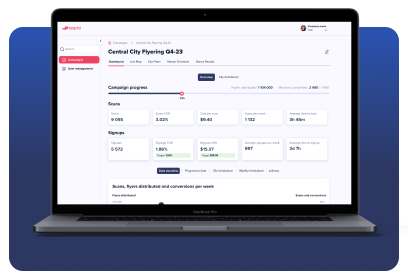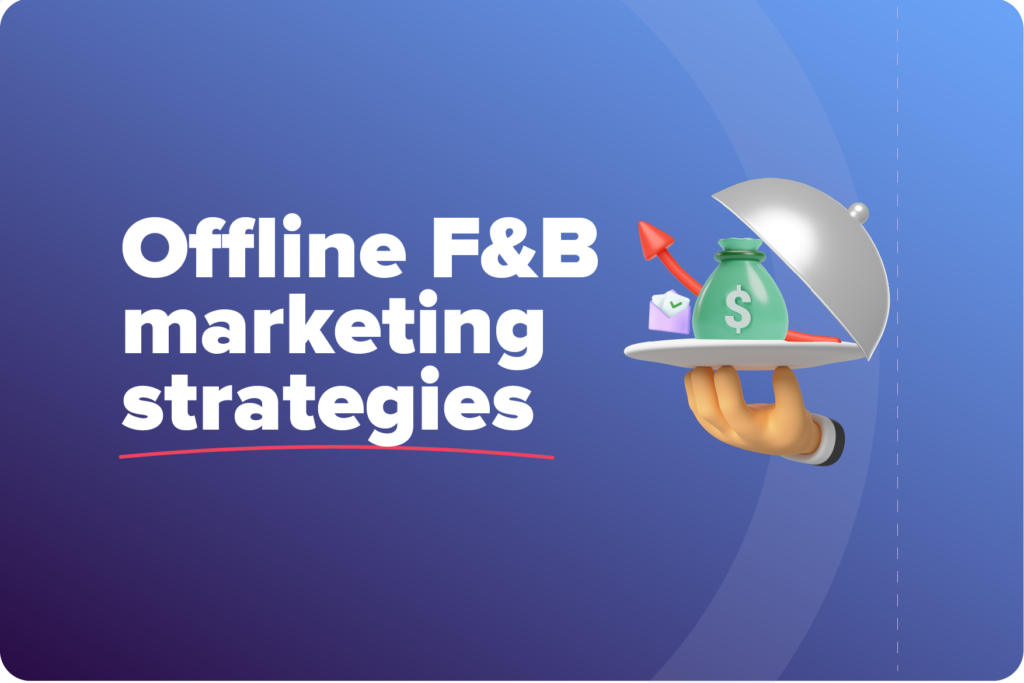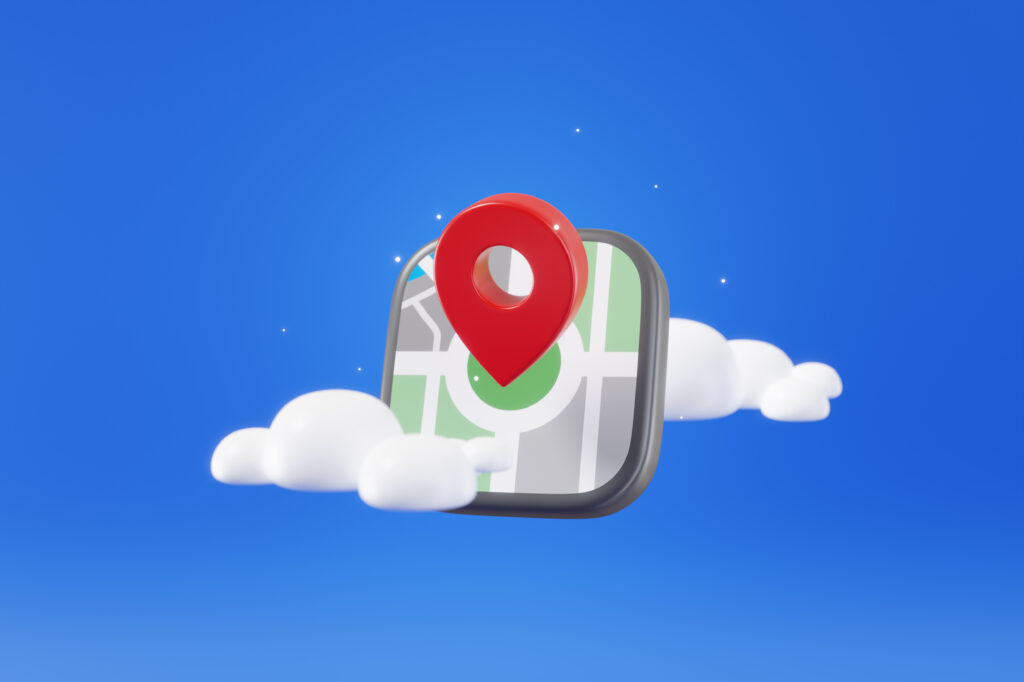How Do You Define Brand Awareness?
What is brand awareness? It is the ability of consumers to recall your brand. Companies with significant brand awareness become household names. When you decide to buy a new phone, you already know that Apple and Samsung are two of the leading choices. Shopping for a new car involves looking at makes and models that you have likely already heard of. While your brand may not become a household name, awareness of your products or services is still essential to your growth.
1. Produce More Content to Increase Brand Awareness
Your content marketing strategy may involve uploading original articles or videos on websites or social media platforms. However, each article or video that you create has limited reach. Producing more content helps you reach more people, making content marketing an important part of your brand awareness strategy.
You can also recycle content for use on other platforms. For example, your website may contain older blog posts that no longer receive much traffic. You can easily use the same content to produce short informative videos that link back to the original article.
Existing content may also be recycled into infographics. One survey found that people are 30 times more likely to read high-quality infographics compared to text articles.
Updating older articles is another way to get more use out of existing content. Consider updating old blog posts with new information or statistics. Try to fill in gaps in the existing articles to make your content more helpful for readers.

2. Stand Out from the Competition with a Unique Brand Identity
If people cannot distinguish your brand from the competition, you may fail to increase awareness of your company. Your brand identity should stand out from the competition.
Strong brands leave a lasting impression on people. Using humor or emotion may help your brand resonate more with your audience. Finding the right tone to use in your marketing depends on the industry and your target market. For example, you may not want to use humor to promote funeral services.
Developing a unique identity is one of the more challenging brand awareness strategies. If you struggle to develop a unique brand identity, think about the features that make your brand unique. Define your unique selling proposition (USP) that your competition cannot match. Your USP may help you find traits to exploit in your branding.
For example, if you offer the most affordable prices, ensure that your audience is aware of the affordability of your brand. Highlight the strengths of your brand in your marketing efforts to stand apart from the competition.

3. Maintain a Consistent Brand Image Across All Platforms
A consistent brand identity helps increase trust with consumers. Consistency is also essential for building awareness. Studies show that consistent branding can increase revenue by up to 23%.
Use the same branding across all platforms. All assets should use the same style. Your assets include the images, logos, color schemes, and content that you use to market your business. Your website, social media profiles, and marketing content should follow set branding guidelines. Many businesses create style guides to ensure that marketers maintain a consistent image.
Along with consistent assets, you need a consistent marketing schedule. For example, posting to social media on the same days each week and using a consistent release schedule for blog posts can increase your reach.
4. Incorporate SEO in All Content and Webpages
Search engine optimization (SEO) can increase brand awareness by helping your web pages appear in more search results. SEO is also cost-efficient. Many of the SEO tactics that you employ today will continue to benefit your business down the road. SEO has a cumulative effect if you continue releasing content optimized for targeted keywords.
Including SEO in your brand awareness strategies increases your reach and establishes authority. People place more trust in the web pages that appear on the first page of search results. The first page of search results receives about 71% of all search traffic.
SEO typically involves researching specific keywords that your target audience is likely to use when searching the internet. The keywords and related phrases are included naturally to help search engines understand the relevance of your content to different searches.
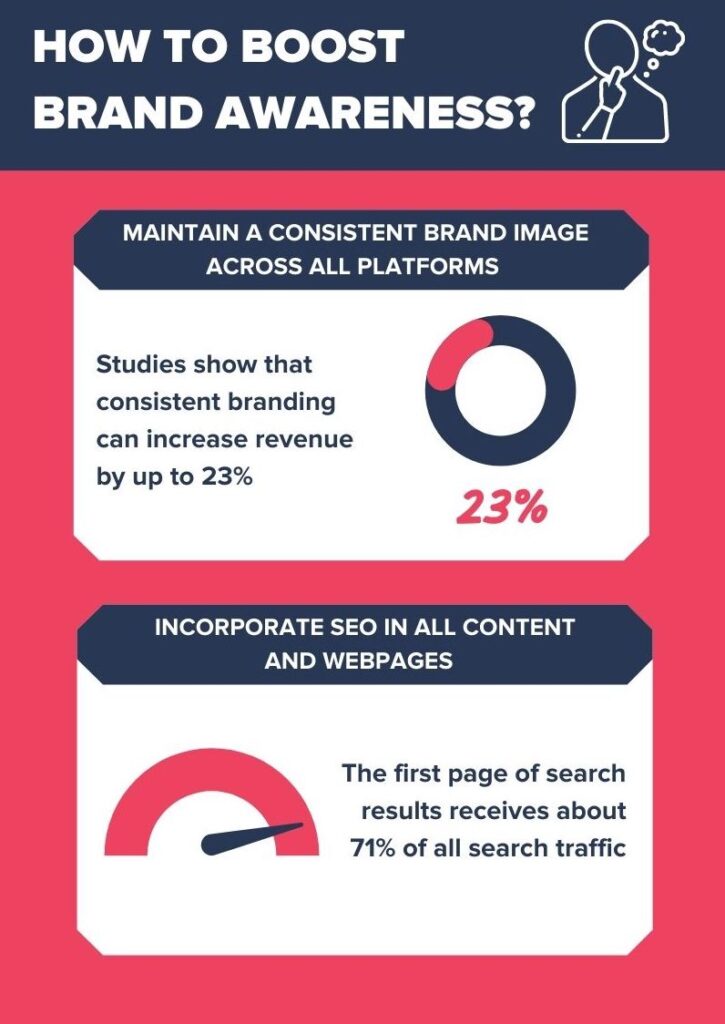
5. Focus on Social Media Platforms to Increase Brand Awareness
Over 82% of the population of the US has at least one social media profile. Facebook receives close to two billion active users across the globe each day. These statistics show the importance of including social media in your brand awareness strategies.
About 70% of marketers claim that brand awareness is their main goal for using social media. Social media is often the first place that consumers discover new brands. You also have multiple options for incorporating social media in your overall marketing strategy. You can post content on social media, curate content, or use paid advertising to reach more users.

6. Create a Recognizable Logo, Mascot, or Slogan
Creating a recognizable logo, mascot, or slogan is a great way to create a stronger impression with potential customers. You will struggle to grow your brand if people cannot remember it.
An effective logo, mascot, or slogan is relevant to your brand and business. It should help consumers understand what you offer. For example, you may use specific colors or phrases that people associate with your industry or the traits that you want to promote.
Color theory is often used when developing logos and mascots. Blue creates a sense of security, green is associated with money and the environment, red creates a sense of urgency and excitement.
7. Partner with Established Brands with a Similar Target Audience
Working with an established company is a common strategy for promoting a new product, service, or brand. Partnering with another company can help transfer some of their trust to your brand. One of the keys to finding a co-branding partner is choosing a brand outside of your immediate market.
For example, GoPro and Red Bull have partnered on a variety of projects, as both brands cater to the same audience. However, they produce different products. GoPro produces cameras for the adventure-seeking crowd, which is also the audience for Red Bull sports drinks.
Finding an established brand with a comparable target audience allows you to leverage their success. It may also help you reach a wider audience. An established company is likely to have more reach, which can help introduce your brand to more people.

8. Create a Referral Program to Generate More Awareness
People trust referrals from friends and family more than the advertising and marketing that they come across online. Creating a referral program can boost awareness while building greater trust with potential leads.
A referral program gives customers incentives to refer your products or services to other people, making it a useful part of your brand awareness strategies. The customers that you acquire from referrals are also more likely to stick around. Referred customers have a 37% higher retention rate compared to customers that you gain through other methods.
9. Use Influencer Marketing to Increase Your Reach
79% of marketers plan to use influencer marketing to reach more consumers. Influencer marketing involves paying an individual with a large social following to promote or introduce a product, service, or brand.
As with co-marketing, influencer marketing allows you to leverage the popularity of another brand to promote your brand. The cost of influencer marketing often depends on the size of their following. If you have a small budget or a niche market, look for micro-influencers. Micro-influencers have 10,000 to 50,000 followers and charge less for marketing partnerships.
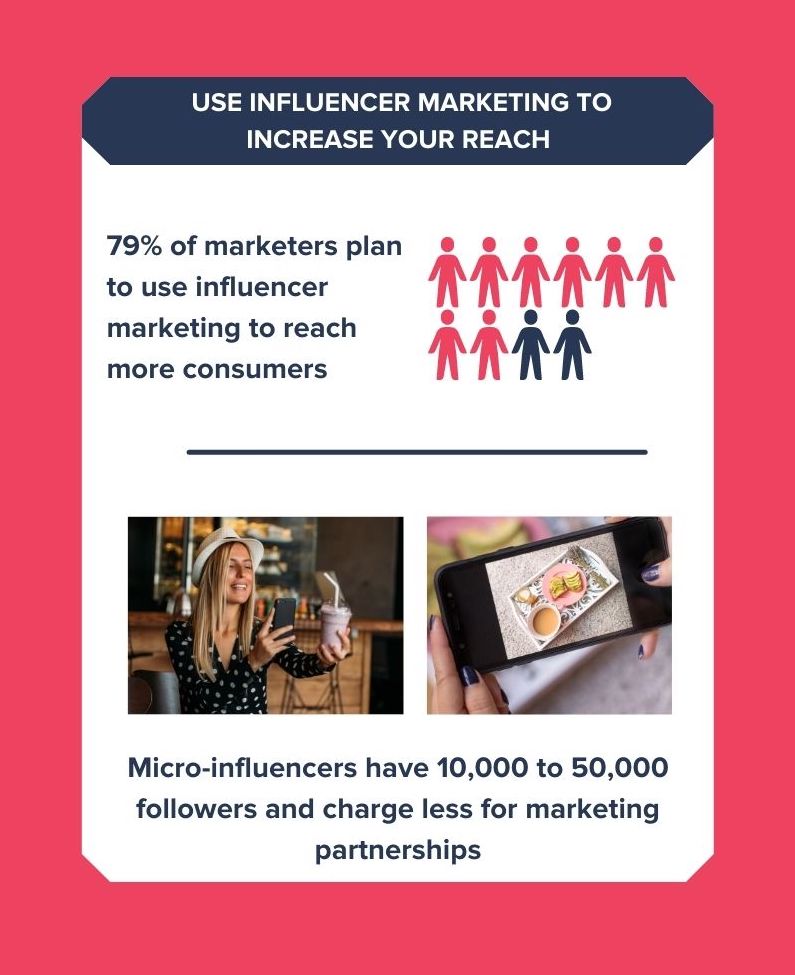
10. Use Offline Marketing to Boost Brand Awareness
Most people use the Internet daily. However, reaching consumers in the offline world helps increase brand recognition. According to offline marketing statistics, there has been a 21% decrease in direct mail. This decrease limits competition, opening the doors for you to reach more people.
Offline marketing helps you connect with your audience in a more direct manner. Common offline marketing campaigns include:
- Brochure and flyer distribution
- Billboards
- Posters
- Radio and television
Radio, television, and billboard advertising often offer a great return, but also require a higher initial investment. If you have a limited budget, you may want to start with brochures or flyers. Strategic flyer distribution leads to real-time interaction with potential leads. Studies also show that paper-based content creates a stronger connection with the brain, making your content more effective.
Flyers are just one example of offline marketing that can help boost brand awareness. You can view our list of five unbeatable offline marketing tactics to explore additional methods.
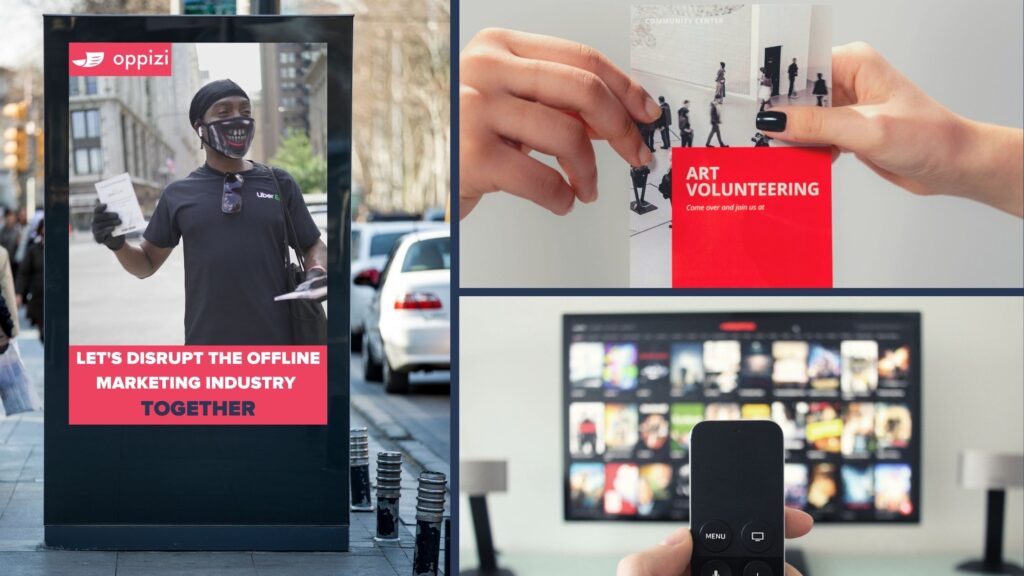
How to Measure Brand Awareness
After implementing brand awareness strategies, you need to track and analyze your efforts. However, brand awareness is often considered difficult to define and review. It is not based on concrete metrics, such as sales and conversion rates. However, you can use available metrics and resources to monitor the growth of brand awareness.
Some of the best tips for measuring the success of your brand awareness campaign:
- Pay attention to website traffic
- Review search volume for your brand name
- Create alerts for mentions of your brand
- Monitor your brand on social media platforms
- Use surveys to gauge brand awareness
Here is a closer look at how each of these steps helps you gain a better picture of your brand awareness.

Website Traffic
Brand awareness metrics often include website traffic. Web traffic helps you determine whether more people are learning about your brand. Paying attention to “direct web traffic” is especially helpful.
Direct traffic includes visitors that type the URL to your website into their browser instead of finding your site on social media or a search engine. An increase in direct traffic indicates that more people are aware of your brand and actively seeking more information.
Search Volume
You should also review search volume for your brand name. Search volume is an important brand awareness KPI for detecting an increase in people searching for your brand.
Use a keyword planning tool, such as the Google AdWords Keyword Planner. The tool can tell if more people are looking for more information about your brand online.

Alerts
You can also create Google alerts to receive a notification anytime that your brand is mentioned online. This helps you track online citations, such as mentions of your brand in blog articles or review sites. An increase in online citations is another indicator that your brand awareness is growing.
Social Media
Monitor your growth on social media platforms. You can search for public mentions of your brand on Facebook, Twitter, and Instagram. If more people are talking about your brand, your marketing efforts are likely working.
Surveys
Surveys are also often used to analyze brand awareness but require more effort compared to the previous options. You can deliver surveys via email, websites, telephone, or mail. Ask a random selection of people whether they are familiar with your brand.
Another option is to survey customers after they complete a purchase. Ask them how they heard of your brand to learn more about where people are discovering your business.

Brand awareness is critical to the success of a company. A lack of awareness limits growth. It keeps businesses from reaching more customers and retaining existing ones. Without a strong brand identity, you may struggle to attract interest in your products or services. Growing a successful business requires you to know how to increase brand awareness. So, which targeting option is best for achieving brand awareness? Some of the most effective brand awareness strategies include using content marketing to reach more people and employing the help of influencers. You should also continue to monitor the growth of your brand. Pay attention to website traffic, online citations, and social media chatter. If more people are talking about your company, your brand awareness strategies are likely paying off.
